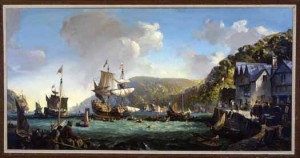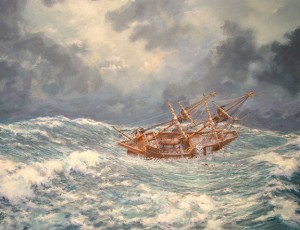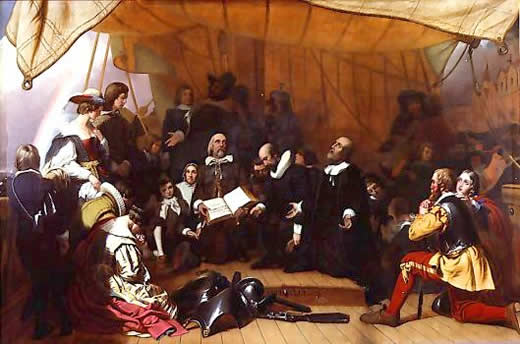In my last post about the Pilgrims, I laid out their rationale for leaving Holland and resettling in America. I hinted at some of the problems they were going to face. First, only a minority of the Separatist congregation would be able to make the trip initially, and their pastor, John Robinson, would have to stay behind with the majority. It turns out he never made it to the New World; he died before he could make the trip. But as they were preparing to leave Holland to go to England to make final preparations, he did give them sound advice for how to conduct themselves as a civil society, focusing on the following key points:
- No one was to consider themselves better than another due to societal rank (thereby avoiding one of Jamestown’s problems).
- Their leaders were to be elected by the freemen of the company (this was a feature from the start as opposed to Jamestown’s first decade).
- Godliness was to be the mark of both good rulers and good citizens, with the corollary that it was necessary for the citizens to be godly if they expected their rulers to exhibit the same character.
There is a famous painting of the Pilgrims leaving Holland on board their ship. You can find it in the Capitol Rotunda in Washington, DC:
Don’t tell anyone this is a religious painting; they may want to remove it. You know, separation of church and state. I’ll come back to that controversial statement later in our review of American history.
Once in England, they bought all their supplies for the journey, but the financiers who backed the pilgrimage forced a change in the agreement: they would now have to work for those “adventurers” six days a week rather than five. They also were saddled with a communal farming arrangement that would create further problems later. That’s another issue I’ll come back to later.
 Finally, they were ready to sail on their two ships, the Mayflower and the Speedwell. If you’ve never heard of the Speedwell in connection with the Pilgrims’ arrival in America, there’s good reason. Twice they set off and had to return because that ship sprang leaks. Research has shown that there probably was sabotage at work, but regardless of the reason, they now had to decide what to do.
Finally, they were ready to sail on their two ships, the Mayflower and the Speedwell. If you’ve never heard of the Speedwell in connection with the Pilgrims’ arrival in America, there’s good reason. Twice they set off and had to return because that ship sprang leaks. Research has shown that there probably was sabotage at work, but regardless of the reason, they now had to decide what to do.
It was getting late in the year, and not the best time to set off, knowing they would arrive in winter. Yet if they waited until spring, they would have used up their supplies and have to go even deeper in debt. They chose to go forward, albeit with fewer people, since they now had only the Mayflower.
The trip itself was horrendous—terrible storms much of the time. These were not experienced seamen but merely pilgrims on a journey for the Lord. Seasickness prevailed and they were told to stay below decks most of the time. Those were cramped quarters with people sharing the space with animals and having virtually no privacy.
 One of the travelers, a servant named John Howland, finally decided he couldn’t take the cramped quarters anymore, and against orders, went on deck, only to be swept into the North Atlantic in November. He was able to grab a rope from the ship as it leaned over in the storm; he hung on, and no one knows exactly how long he was in the icy waters before someone spotted him.
One of the travelers, a servant named John Howland, finally decided he couldn’t take the cramped quarters anymore, and against orders, went on deck, only to be swept into the North Atlantic in November. He was able to grab a rope from the ship as it leaned over in the storm; he hung on, and no one knows exactly how long he was in the icy waters before someone spotted him.
The rest of the story—as Paul Harvey always said—is this: Howland lived into his nineties, with many children and grandchildren. In fact, if you trace the descendants of John Howland, you find some rather interesting people in American history. Joseph Smith, the founder of Mormonism, is descended from Howland. In the entertainment world, we have both Humphrey Bogart and Alec Baldwin as descendants (of course that also means the other Baldwin brothers, so it’s a “win”). On the political side, Franklin Roosevelt and both George Bushes can trace their ancestry back to the man who was pulled out of the sea that day.
The storms caused a main beam on the ship to crack, which threatened everyone. The Pilgrims, though, had a giant iron screw with them for use in constructing houses. It was put in place under the cracked beam and allowed the journey to continue safely.
It was an exhausting trip. But their trials were hardly over. They had just begun. More on that in a future post.

